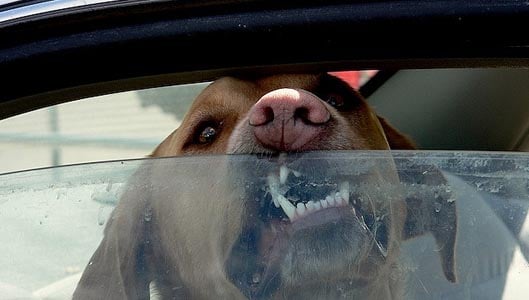Dogs, cars and heatwaves. The RSPCA advice…
At the time of writing, there is a small heat wave hitting the UK, and as it often does, the issue of leaving dogs in cars and what to do if you see a dog suffering has come to the forefront.
There has been plenty of “advice” circulating the Internet since 2015 (an example below) as to what you can and cannot do when you encounter a suffering dog in a boiling car, and since we ourselves are not experts in the law, we have accumulated the best advice from law enforcement and animal right groups to present to you here.
THE POLICE ARE NOW SAYING IF YOU SEE A DOG LOCKED IN A CAR IN HOT WEATHER TAKE A PICTURE OF DOG AND CAR , IF A PERSON IS WITH YOU GET THEM TO BRING UP BBC WEATHER FOR YOUR AREA ON THEIR PHONE SO YOU CAN SCREEN SHOT THE TEMP THEN BREAK WINDOW , THIS WAY YOU WILL NOT BE CHARGED WITH CRIMINAL DAMAGE AND IT GIVES THE POLICE AND THE R.S.P.C.A PHOTO EVIDENCE TO TAKE OWNERS TO COURT
CAN EVERYONE PLEASE COPY AND PASTE THIS INFORMATION TO PREVENT THIS CRUEL ACT FROM HAPPENING.
Note that this is aimed for UK readers.
If you see a dog in a hot car that is in obvious distress or showing obvious signs of heatstroke…
Yes. You can call 999. Many would be reluctant to call the emergency services believing that it is for emergencies related only to people, but many police forces have confirmed that it is acceptable to call 999 providing a dog is in clear and immediate danger.
For heatstroke symptoms read here.
In most cases a police officer should be able to attend the situation within a reasonable amount of time, but in some cases where officers are stretched or too far away this may not be possible.
Leading us to…
Can you break into the car yourself?
Many may argue that this area of the law is vague or at least subjective because it requires an accurate reading of a potentially subjective situation which will result in whether you are liable for criminal damage.
Sponsored Content. Continued below...
It basically lies in the section 5(2)(a) Criminal Damage Act 1971 in regards to implied consent which essentially means whether it is reasonable to assume the owner of the car and dog would want you to commit damage to their property given the circumstances.
For example, it would be reasonable to assume the owner of a house would want you to break their door lock to put out a potentially devastating house fire. In that case you would likely be covered by the Criminal Damage Act 1971 under section 5(2)(a) given the information you were aware of when committing the act.
The same may apply to a car, if you believe that a dog is showing clear signs of distress and is in danger. It is reasonable to assume the dog owner values the life of their pet more so than their car window, even if it turns out that this is not actually the case.
However you need to prove your actions were reasonable. Tell the police operator what you are going to do, and take photos or video of the dog and having witnesses in your presence who agree with your assessment of the situation. If they need to leave remember to take their contact information.
But remember – if you do break into a car, there is always a chance you’ll end up in court. Always call 999 first and if possible follow the advice of the operator.
Continued below...
Thanks for reading, we hope this article helped, but before you leave us for greener pastures, please help us out.
We're hoping to be totally ad-free by 2025 - after all, no one likes online adverts, and all they do is get in the way and slow everything down. But of course we still have fees and costs to pay, so please, please consider becoming a Facebook supporter! It costs only 0.99p (~$1.30) a month (you can stop at any time) and ensures we can still keep posting Cybersecurity themed content to help keep our communities safe and scam-free. You can subscribe here
Remember, we're active on social media - so follow us on Facebook, Bluesky, Instagram and X
